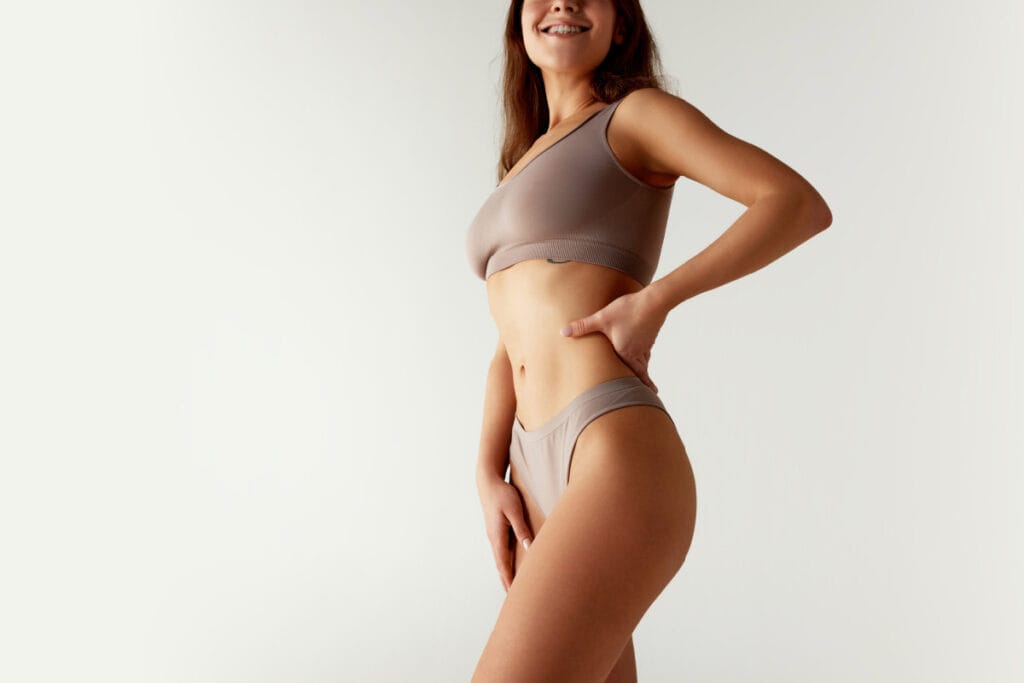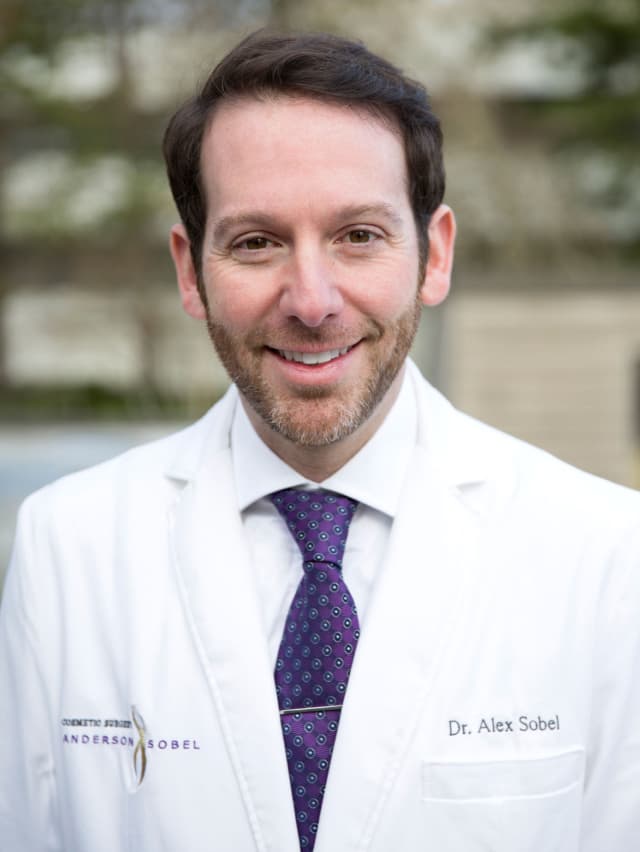Why We Still Need Liposuction in the Age of GLP-1 Medications

GLP-1 medications like Ozempic, Wegovy, and Mounjaro have transformed weight loss, helping patients achieve significant reductions in body fat. But while these medications effectively lower overall weight, they don’t always deliver the sculpted, proportionate look many patients envision.
Weight loss & body contouring are two different things
Weight loss and body contouring are two different things. GLP-1s help reduce total body fat, but they can’t control where the fat comes off or address the way a person feels about their new body. Many patients experience changes in self-perception, confidence, and body image during weight loss, and that’s where cosmetic body contouring can be a powerful tool, not just for aesthetics, but for self-affirmation.
To understand why GLP-1s alone won’t replace liposuction, we must also consider how body contouring can enhance both inner and outer self-confidence and how these treatments can be beneficial at any stage of any weight loss journey.
GLP-1 medications vs. liposuction
There are several differences between GLP-1 medications and liposuction; many people assume that weight loss equals body sculpting, but the two are fundamentally different.
GLP-1 receptor agonists promote overall fat loss by:
- Suppressing appetite, leading to reduced caloric intake
- Slowing gastric emptying, helping patients feel fuller longer
- Enhancing insulin sensitivity, which helps regulate fat storage
Thus, the result is widespread weight loss across the entire body—but where the weight comes off is determined by genetics, not personal preference.
Liposuction, on the other hand, is a precise, surgical fat removal and body-contouring technique that:
- Permanently removes stubborn fat cells in specific areas
- Allows for body sculpting, enhancing proportions and contours
- Targets diet- and exercise-resistant fat
In sum, GLP-1s shrink fat cells everywhere, but liposuction physically removes them from targeted areas allowing for precise shaping and contouring.
How permanent is GLP-1-associated weight loss?
One common question is: Will the weight stay off once I stop taking GLP-1s?
Without continued lifestyle changes, weight regain is likely. Studies show that patients who stop GLP-1s may regain weight over time if they don’t maintain healthy habits.
Muscle loss can make any weight you regain appear more pronounced. Many patients on GLP-1s experience muscle atrophy, which can alter body composition and make weight fluctuations more noticeable (and as muscle helps reduce insulin resistance, muscle loss works against health metabolism).
Fat distribution may shift. If weight is regained, it may not go back to the same areas and it may not be proportionate.
Liposuction can refine weight loss results
Thus, liposuction remains extremely valuable even for patients committed to long-term GLP-1 use—it ensures that weight loss results look balanced, proportional, natural, and sculpted, if desired.
Weight loss is often seen as the “end goal,” but in reality, it’s just one step in a bigger journey toward self-acceptance and self-love.
Liposuction and body contouring are more than just fat removal. Losing weight, especially a significant amount, can be a deeply emotional experience. Patients often find that their external transformation doesn’t always match their internal self-perception. For many, body contouring isn’t just about removing stubborn fat; it’s about having some control over their appearance, affirming their self-confidence at every stage of the journey, and celebrating their hard work and transformation, all sorts.
Similarly, weight loss is often seen as the “end goal,” but in reality, it’s just one step in a bigger journey toward self-acceptance and self-love. Body contouring, including liposuction, helps bridge the gap by aligning a patient’s physical appearance with how they feel on the inside. For many, they’d simply like to “move on” from thinking about their physical appearance on a regular and intrusive basis.
When is the best time for liposuction if I’m on a weight loss journey?
For liposuction, it is often thought of as a “finishing touch” after weight loss, but the truth is, it can be tremendously beneficial at any stage:
- Early in the weight loss journey: Some patients use liposuction as a way to address areas of disproportionate fat that remain resistant to diet, exercise, or medication. This can provide a psychological boost, enhance motivation, and in many cases, make exercise easier.
- During active weight loss: While significant weight loss is still ongoing, some patients may choose to treat certain problem areas that aren’t changing as expected or creating poor self-esteem.
- After reaching a goal weight: At this stage, liposuction can help fine-tune results, ensuring a sculpted, balanced look. However, an experienced liposuction surgeon can generally anticipate the course of a patient’s weight loss and approach the results sooner than this stage.
Patients do best when they realize weight loss and body contouring isn’t about reaching a perfect body—rather, it is about feeling strong, confident, and in control of your appearance at every step of their transformation.
Which body areas commonly need body contouring after weight loss?
The best areas for liposuction-related GLP-1 weight loss are extremely patient-dependent, as they may differ from patient to patient (and their relative significance may also differ for each patient). Consultation and excellent, personalized treatment planning are crucial to all cosmetic surgery.
There are, however, some common areas that I’ve observed in practice:
- Lower abdomen (a.k.a. Ozempic pouch)
- Flanks (love handles)
- Inner and outer thighs, and inner knees
- Calves and ankles
- Upper arms (bat wings), though this often represents skin excess
- Under the chin (part of what is considered “Ozempic face”)
- Front and back bra roll areas
- Mons pubis
Since GLP-1 medications reduce overall body fat, but not specific pockets of fat, these areas, among others, may still require targeted treatment to achieve a more natural-appearing body shape, if that is something you desire after your weight loss.

Skin tightening surgery may be paired with liposuction
We often care for patients beyond fat removal, as liposuction does have limitations. One major side effect of GLP-1 weight loss is loose skin, especially in patients who lose weight rapidly. While liposuction does tighten skin through inflammation and contraction, this effect is often inadequate to meet the patient’s desires.
For patients with mild skin laxity, non-surgical treatments like radiofrequency, Thermage, for example, or ultrasound skin tightening will help somewhat.
For moderate to severe sagging (especially in the face, abdomen, arms, or thighs), a mini facelift, tummy tuck, body lift, or arm lift/thigh lift may be the best option.
Fat grafting may be helpful in areas that appear “hollow” after weight loss
Also, we often leverage diet- and exercise-resistant fat for transfer into areas that have lost more volume than desired. Common areas for fat grafting include the face (especially for “Ozempic face”), breasts, hips, and buttocks.
The best results often come from a combination approach involving liposuction to remove stubborn fat, skin tightening or surgical lifting as needed, and fat transfer to restore lost curves.
GLP-1s have changed the way we approach weight loss, metabolism, and insulin resistance, but they don’t predictably change where the body holds fat, its proportions, or how a person feels after the weight is gone.
Liposuction and body contouring remain essential tools in the GLP-1 age, just as they have for weight-loss surgery (bariatric surgery), because they help patients refine their results and enhance natural proportions, address stubborn fat deposits that don’t respond to weight loss, and improve their self-confidence and align their appearance with how they feel inside. This is why, whether you’re still losing weight, maintaining your results, or just getting started, liposuction and body contouring can be a powerful part of your confidence.
- Triple board-certified in general cosmetic surgery, facial cosmetic surgery, and otolaryngology
- 15+ years of experience specializing in cosmetic surgery
- Operates in an on-site accredited surgical suite for patient safety and privacy
- National leader in cosmetic surgery, including as Past President of the American Board of Cosmetic Surgery and the American Academy of Cosmetic Surgery, and as an expert speaker at medical conferences
- Former Seattle Met Top Doctor with hundreds of 5-star patient reviews
Learn more:
